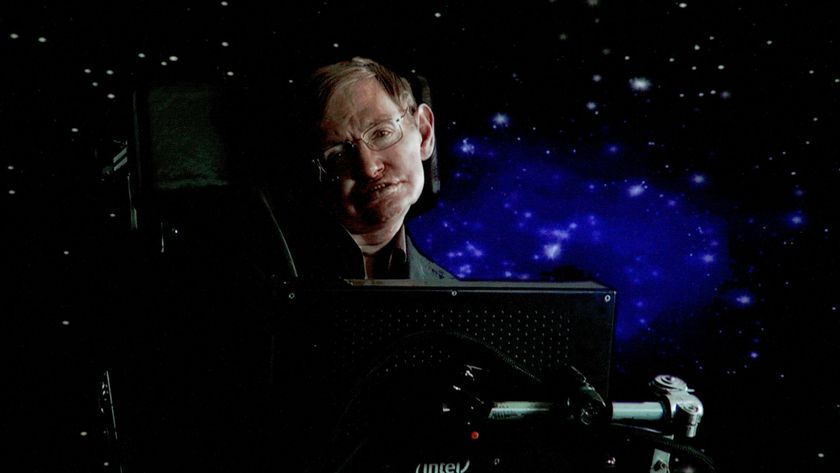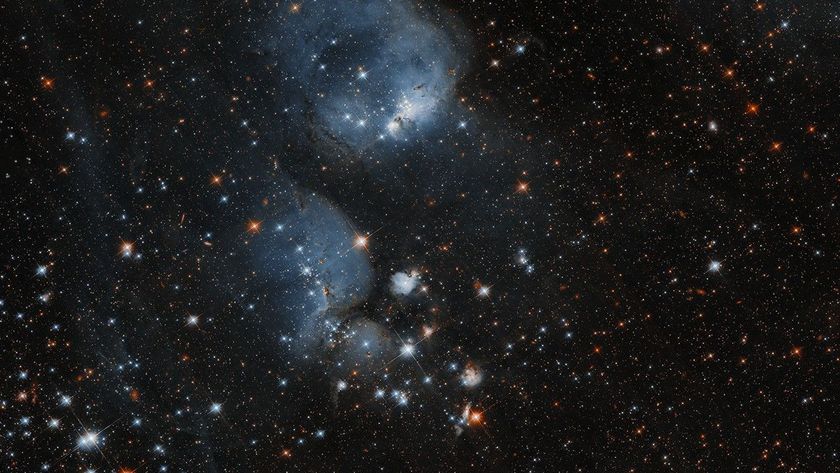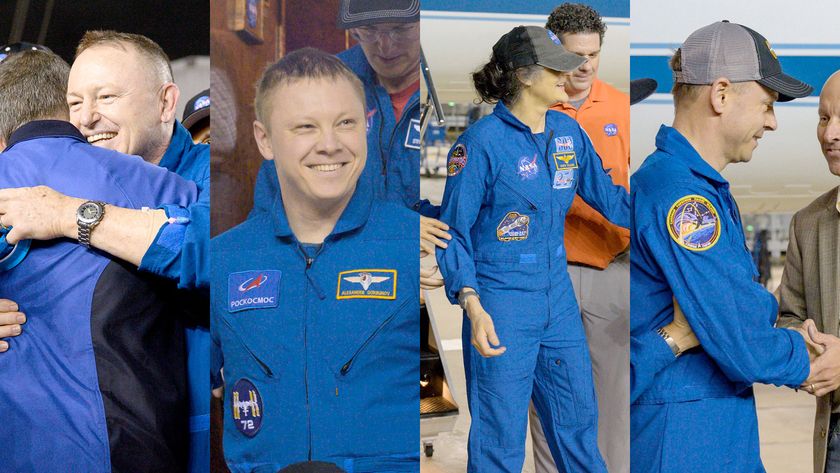Spectacular Photos of Nebulas in Deep Space
Bubble Nebula Cropped by Hancock
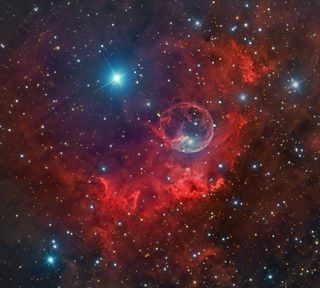
Terry Hancock captured this cropped image of the Bubble Nebula, or NGC 7635, from Down Under Observatory in Fremont, Mich. on the nights of Aug. 15, 16 and 18. [Read the Full Story Here]
Bubble Nebula by Hancock
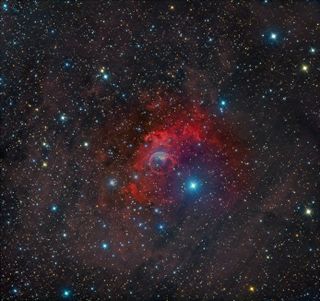
Astrophographer Terry Hancock sent SPACE.com this image of the Bubble Nebula, or NGC 7635. He captured the photo from Down Under Observatory in Fremont, Mich. after 11 hours of exposure time over three nights in August. [Read the Full Story Here]
The Splendor of Orion: A Star Factory Unveiled
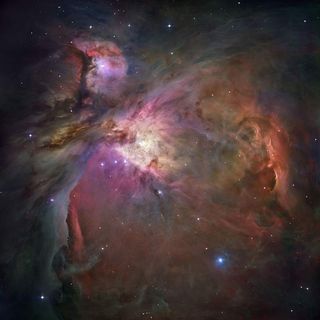
This new Hubble image of the Orion Nebula shows dense pillars of gas and dust that may be the homes of fledgling stars, and hot, young, massive stars that have emerged from their cocoons and are shaping the nebula with powerful ultraviolet light.
Intricate Crab Nebula Poses for Hubble Close-Up
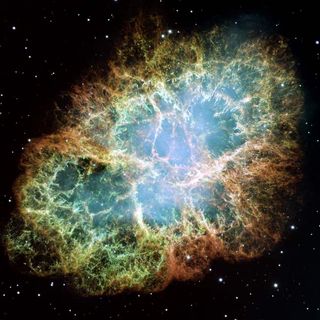
The Hubble Space Telescope has caught the most detailed view of the Crab Nebula in one of the largest images ever assembed by the space-based observatory.
New Picture Goes Into the Eye of the Helix Nebula
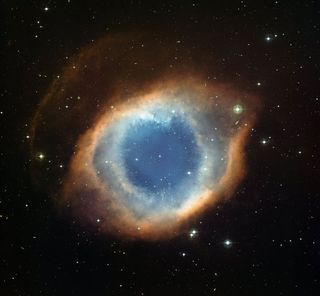
This color-composite image of the Helix Nebula (NGC 7293) was created from images obtained by the Wide Field Imager (WFI), an astronomical camera attached to the ESO telescope at the La Silla observatory in Chile.
Two-Star Collision Yields Three-Ring Nebula
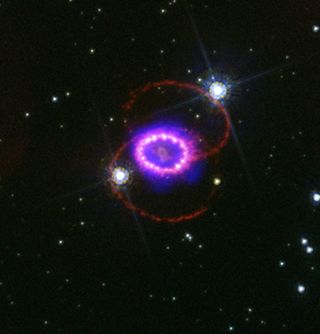
Supernova 1987A occurred in the Large Magellanic Cloud, a galaxy only 160,000 light years from Earth. The outburst was visible to the naked eye, and is the brightest known supernova in almost 400 years.
Near-Perfect Symmetry Revealed in Red Cosmic Square

An image of the Red Square nebula surrounding the hot star MWC 922. The picture was taken with infrared adaptive optics imaging at Palomar and Keck Observatories.
Get the Space.com Newsletter
Breaking space news, the latest updates on rocket launches, skywatching events and more!
Huge Stars Seen as Source of Glowing Gas
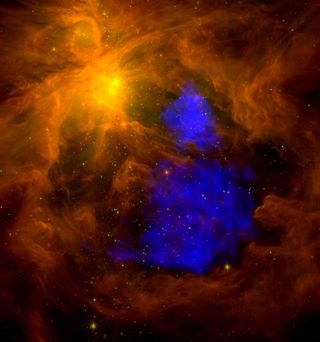
A million-degree plasma cloud in the Orion Nebula. The emission colored in blue shows X-ray emission from a hot plasma cloud in the extended regions of the Orion Nebula, detected by the XMM-Newton satellite. The background image has been recorded by the Spitzer Space Telescope in the infrared, showing emission from cool dust.
Violent Carina Nebula Seen in Detail
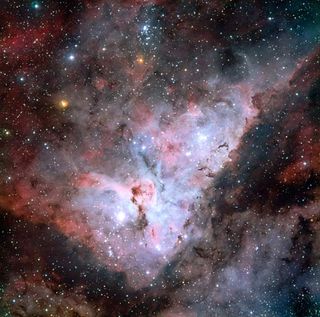
Several well known astronomical objects in and near the Carina Nebula can be seen in this wide field image: to the bottom left of the image is one of the most impressive binary stars in the Universe, Eta Carinae, with the famous Keyhole Nebula just adjacent to the star. The collection of very bright, young stars above and to the right of Eta Carinae is the open star cluster Trumpler 14. A second open star cluster, Collinder 228 is also seen in the image, just below Eta Carinae. North is up and East is to the left.
Cosmic Hand Reaches for the Light

Red represents low-energy X-rays, the medium range is green, and the most energetic ones are colored blue. The blue hand-like structure was created by energy emanating from the nebula around they dying star PSR B1509-58. The red areas are from a neighboring gas cloud called RCW 89.
Trisected Nebula Seen in Fresh Detail
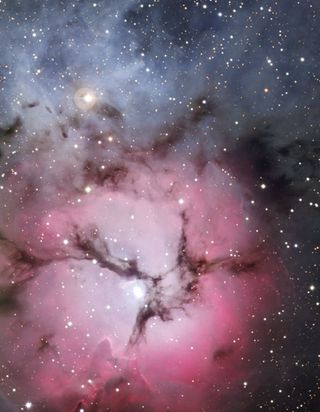
A new image of the Trifid Nebula, named by English astronomer John Herschel, was taken with the Wide-Field Imager camera attached to the MPG/ESO 2.2-metre telescope at ESO’s La Silla Observatory in northern Chile. Three different regions of the nebula can be seen in the image.
Join our Space Forums to keep talking space on the latest missions, night sky and more! And if you have a news tip, correction or comment, let us know at: community@space.com.

Space.com is the premier source of space exploration, innovation and astronomy news, chronicling (and celebrating) humanity's ongoing expansion across the final frontier. Originally founded in 1999, Space.com is, and always has been, the passion of writers and editors who are space fans and also trained journalists. Our current news team consists of Editor-in-Chief Tariq Malik; Editor Hanneke Weitering, Senior Space Writer Mike Wall; Senior Writer Meghan Bartels; Senior Writer Chelsea Gohd, Senior Writer Tereza Pultarova and Staff Writer Alexander Cox, focusing on e-commerce. Senior Producer Steve Spaleta oversees our space videos, with Diana Whitcroft as our Social Media Editor.





